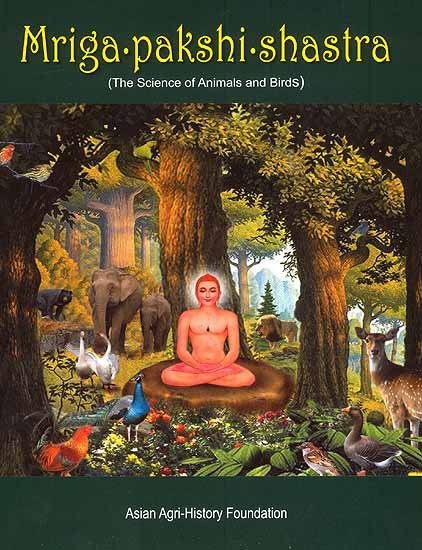Animal Kingdom (Tiryak) in Epics
by Saranya P.S | 2019 | 51,616 words | ISBN-10: 8190396315 | ISBN-13: 9788190396318
An English study the Animal Kingdom (Tiryak) in Epics.—The present thesis is based entirely on Ramayana and Mahabharata although an attempt is made to analytically compare the Animal kingdom with Mriga-pakshi-shastra—‘The ancient Indian science of of Animals and Birds’....
Chapter 4.13 - The Horse in the Epics
In the Ramayana the horse is described as a domestic animal. In many places the horse is described as part of the cavalry.[1]
They are of different colours—white, black, red or mixed. They have long faces and long tails, and sharp and short ears. They have strong feet with single hoof. They are very powerful and elegant. They are fit for riding and drawing vehicles. They make good decorations of houses and places. Their mating season is spring. They enjoy with their mares in solitary places, under trees, plains and bushes. When the mares become pregnant, foam starts flowing from their mouths. The pregnancy time is 10 to 12 months. The young ones suck the milk of the mother until they are one year old. Then they try to eat grass or tender herbs or plants. By the 2nd year they run fast. From their 4th year they are fit for riding and drawing carts. They must be trained in their early years. There are seven varieties of horses.[2]
The first variety is called Turanga. They are always white in colour. They have long necks and faces. Their testicles and penises are short. They are strong and powerful and are smooth and peaceful. They eat small quantities of food and are easily trainable. They have big eyes. They are moderate in size. They walk fast with uplifted faces.
They have a good smell on their bodies. Their walk, trot, canter, jump and gallop are excellent. They are the best horses.
The 2nd variety of horses is Ashva. They are red-coloured. Their eyes are of honey colour. They run like an arrow. People can easily ride them. Their cries resemble thunder. They can withstand hunger and thirst. They have small ears and long tails. Their body smells good. They have a strong memory. They are not fickle-minded. They like to swim in water.
The 3rd variety is called Ghotaka. They are black. They are strong and swift. They often cry. They are short and very clean. Their teeth are smooth. They can work very hard. They have stout and strong necks. When they bite their teeth, it means they are angry.
The 4th variety is called Arvan. They are short in size and have different colours. They are not fast but they can do a lot of work. Their cries are like thunder. They eat very little and they don't seem to get annoyed. They walk very beautifully. They have broad eyes. They are very faithful to their masters. They can carry heavy loads.
The 5th variety is called Vaha. They are red in colour, but their faces and legs are white. They have much power and strength. They are short and have hanging testicles. Their cries are pleasant. They have long and stout necks. They work hard when punished. They have a strong memory. They have red tongues and long tails. They are submissive to their masters. There are good curls on their bodies.
The 6th variety is called Gandharva. They have spots of different colours on their bodies. They are very tall. They are noble-minded. They are quite submissive to their masters. Those horses which are red in their bodies have white colour on their faces, breasts, hinder portions and legs. They are very clean and have good memory. They eat very little. They are good for all kinds of work -war, hunting, riding and drawing carts.
The 7th variety is known as Haya. They are white, red or black throughout without any mixture of colours. They have long mane on their necks. They are very bold and are not afraid of anything. They are the best for wars. They look very majestic and beautiful. They can withstand heavy winds, rain and hot sun. They have broad faces and they are good for riding.
Footnotes and references:
[1]:
Valmiki Ramayana . 20.50.45-47, 2.51.22, 2.59.15, 2.70.21, 2.97.24, 5.4.27, 5.6.31
[2]:
Mrigapakshishastra [mriga-pakshi-shastra] .I.7.340, 358b,,364,372,376,381,385,391
